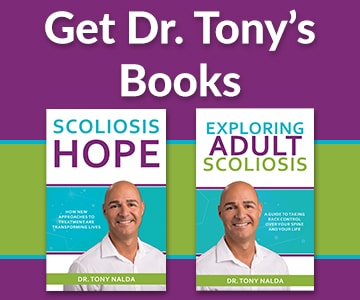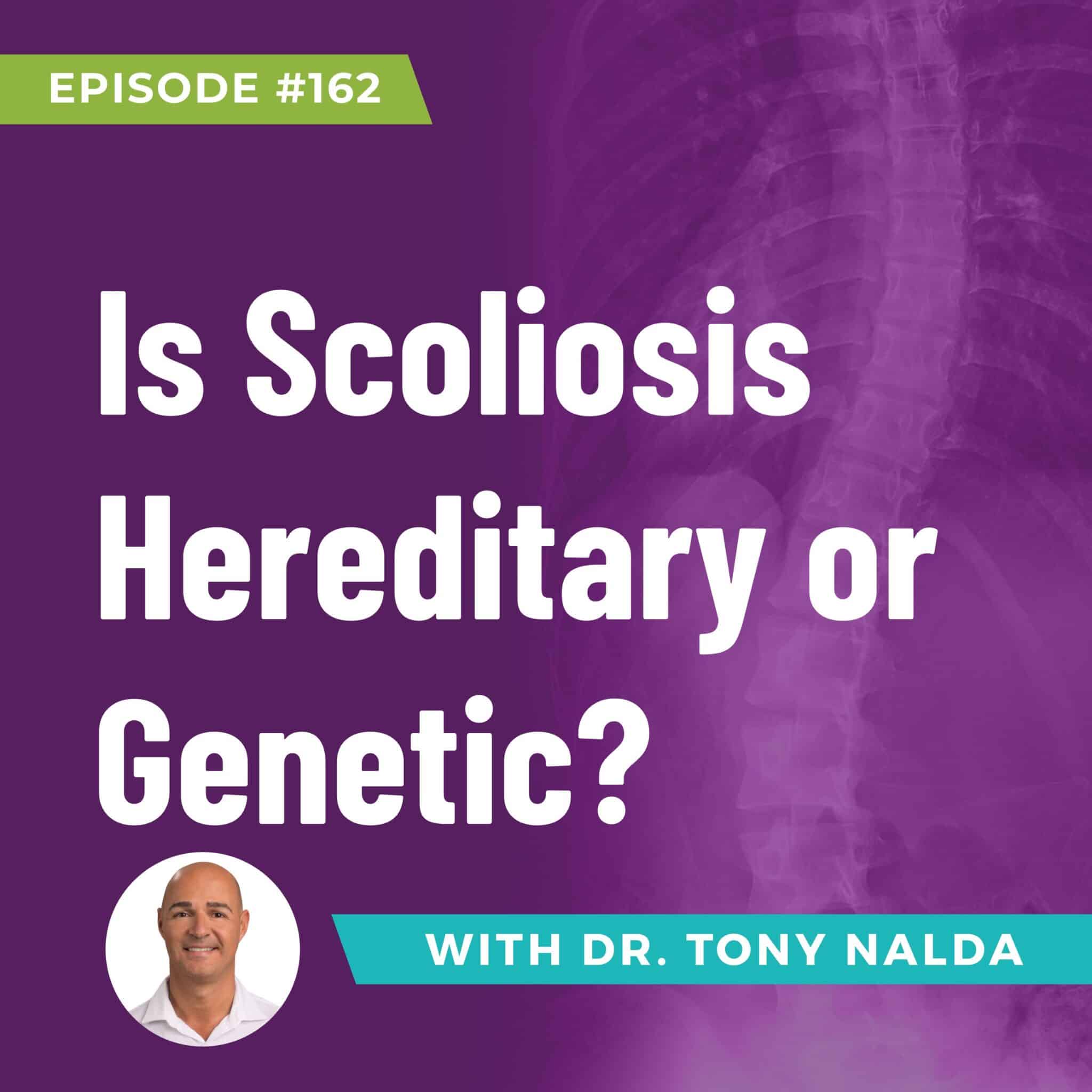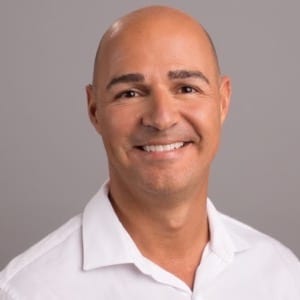Episode 162: Is Scoliosis Hereditary or Genetic?
Table of Contents
Is Scoliosis Hereditary?
Exploring the Genetic Link and Why It May Not Matter for Treatment
Receiving a scoliosis diagnosis often sparks a cascade of questions:
“How did I get this?”
“Did I inherit it?”
“What can I do about it?”
In this episode of the Scoliosis Treatment podcast, Dr. Tony Nalda breaks down one of the most common concerns—whether scoliosis is hereditary—and explains why discovering the “why” may not always impact how we treat the condition.
Family History vs. Genetic Cause
Patients frequently share that scoliosis “runs in the family.” But does that mean it’s genetic?
Dr. Nalda explains that scoliosis tends to cluster in families, but no single gene has ever been definitively linked to idiopathic scoliosis. Even identical twins—who share the exact same DNA—may have different outcomes, with one developing scoliosis and the other not. This strongly suggests that while there may be hereditary tendencies, scoliosis is not directly caused by genetics alone.
Different Types of Scoliosis (And Their Causes)
To understand where heredity may play a role, it's important to look at the four main types of scoliosis:
-
Idiopathic Scoliosis
-
Makes up 80% of cases
-
Cause: Unknown (idiopathic)
-
Most often seen in adolescents
-
Believed to be multifactorial, possibly involving environmental, developmental, and minor genetic influences
-
-
Neuromuscular Scoliosis
-
Associated with conditions like cerebral palsy, Marfan syndrome, or Ehlers-Danlos syndrome
-
More likely to have a genetic or systemic origin
-
-
Congenital Scoliosis
-
Present at birth due to malformed vertebrae (e.g., hemivertebra)
-
Truly genetic/developmental in nature
-
-
Degenerative or Traumatic Scoliosis
-
Caused by injury or wear and tear
-
Often appears in adulthood
-
Not hereditary—these result from physical changes over time
-
Why “Cause” Doesn’t Always Change the Outcome
Dr. Nalda uses a powerful analogy:
“If an earthquake causes a building to collapse, we may study the cause—but the most urgent need is to rebuild the structure.”
Similarly, scoliosis—regardless of the cause—becomes a structural problem that must be corrected. Many cases are diagnosed long after the original cause (if any) occurred, and chasing the “why” doesn't usually change how the curve affects the spine today.
Can Idiopathic Scoliosis Be Treated Without Knowing the Cause?
Yes.
Dr. Nalda emphasizes that effective scoliosis treatment doesn’t depend on knowing the exact cause. At the Scoliosis Reduction Center, idiopathic cases are treated with a multimodal approach, including:
-
Scoliosis-specific chiropractic care
-
Customized physical therapy and rehab
-
Scoliosis-specific exercises
-
Corrective bracing
These strategies focus on correcting the structural changes in the spine—not just the symptoms—and help stop curve progression over time.
Bottom Line: Focus on the Solution, Not Just the Source
While the question "Is scoliosis hereditary?" is understandable, the better question might be: What can I do now to manage it? Whether the root is genetic, environmental, or unknown, scoliosis can be treated effectively—especially when addressed early and proactively.
📘 Download Our Free Guide
Want more information on how to treat scoliosis without surgery?
👉 Get your copy of “How to Effectively Treat Scoliosis”
🎧 Listen to More Episodes
Visit ScoliosisReductionCenter.com to learn more about our conservative scoliosis treatment options.
Thank you for tuning in to the Scoliosis Treatment Podcast with Dr. Tony Nalda. Be sure to subscribe and hit the bell icon to be notified of new episodes!
Artlist.io 847544
Podcast: Play in new window | Download
Subscribe: RSS
Dr. Tony Nalda
DOCTOR OF CHIROPRACTIC
After receiving an undergraduate degree in psychology and his Doctorate of Chiropractic from Life University, Dr. Nalda settled in Celebration, Florida and proceeded to build one of Central Florida’s most successful chiropractic clinics.
His experience with patients suffering from scoliosis, and the confusion and frustration they faced, led him to seek a specialty in scoliosis care. In 2006 he completed his Intensive Care Certification from CLEAR Institute, a leading scoliosis educational and certification center.
About Dr. Tony Nalda
 Ready to explore scoliosis treatment? Contact Us Now
Ready to explore scoliosis treatment? Contact Us Now








